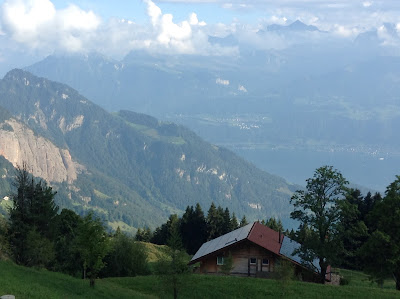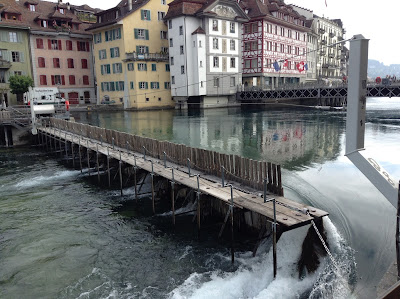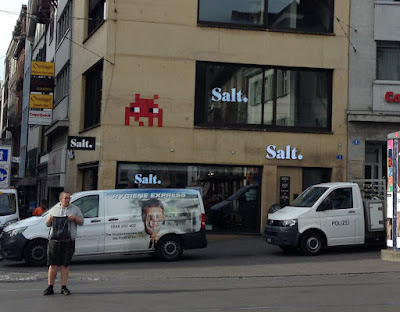The catch, naturally, is that the feeling can't be captured in a photograph. The mountains are too close, too overwhelming for that. But you do have to try.
The mountain pass is about 6,700 feet up, and it feels like it .... particularly for those who walk up a hill to gain a better perspective of the area. This is the center for some winter sports like skiing, and there's a store available to handle those needs. Hotels, restaurants and shops are also around. There are trails back down to the villages below, and they seem pretty popular in the summer.
The train station not only takes visitors from one end of the pass to the other. It also carries tourists to the top of Jungfrau. It is the highest rail station in Europe, and thus takes the name "The Top of Europe." The Eiger is on the left; you can see how steep it is and why it wasn't climbed until the 1930s. It also was the setting for the Clint Eastwood movie, "The Eiger Sanction." Munch mountain is in the middle. From Kleine Scheidegg, you can see the rail depot on Jungfrau.
It costs about $200 to go from the small villages below all the way up to Jungfrau. That might have been nice in different circumstances. No one from our group, though, complained about not making the last step of the journey. Kleine Scheidegg was unforgettable.
Here's how it looks at the end of winter:

















































